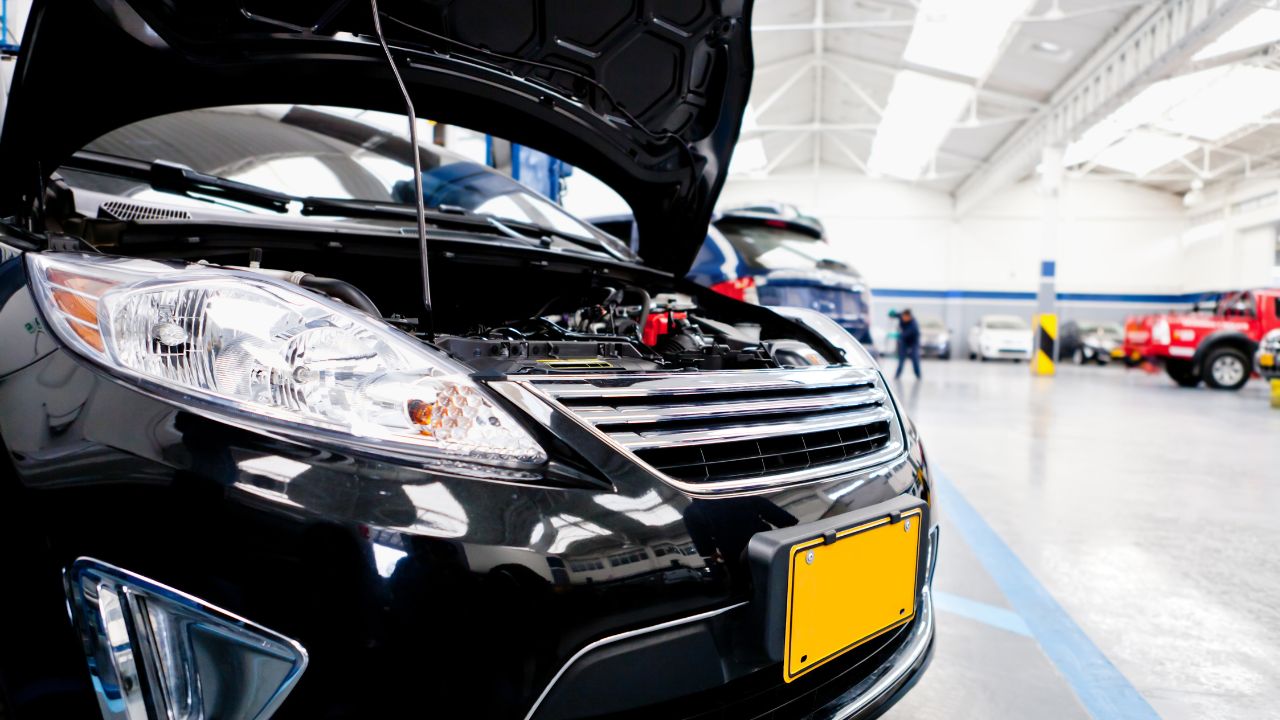
Auto repairs can be expensive. You might save money by performing them yourself. This article contains some helpful tips: Check your coolant level, check the tires and clean out corrosion. It is important that you are able to identify any abnormalities in your vehicle's system and determine the root cause. Continue reading to learn more about auto repairs. Keep these tips in your mind the next time you take your car to the mechanic.
Checking coolant levels
It is important to check the coolant levels in your vehicle every so often. The coolant mix is 50/50 with water. This mixture gives the radiator an optimal boiling temperature and freeze protection. Pre-mixed coolant can be purchased at any automotive supply shop. The coolant can be added by you yourself. Simply remove the cap from the overflow reservoir, and pour the mixture into it. Complete the process by replacing the cap.
Rotating tires
Tire rotation is a common service for auto repair. Rotating the tires helps evenly distribute wear. If one tire wears out quicker than the other, the car will pull in the opposite direction. This causes uneven traction and can lead to poor fuel economy. The car will also be less stable at turns due to this. Rotating the tires can also prolong the life of your tires.
Cleaning corrosion
If the batteries in your car are not maintained properly, corrosion can occur. This can cause the battery to lose power, which will reduce its life expectancy. While cleaning corrosion from the battery terminals is a simple and safe job, it is crucial that you use the right tools. Safety glasses, safety gloves, and cleaning supplies such as a stiff wire brush or baking soda are all necessary. To remove corrosion, you can also clean it with petroleum jelly and rags.

Getting a second opinion
It is a great way to make sure your vehicle is being properly repaired. Most drivers don't know much about their cars, and getting a second opinion can reinforce your knowledge and help you decide whether or not your initial mechanic's diagnosis was correct. It doesn't really matter if you are seeking a second opinion. However, it is a good idea before allowing a mechanic to perform major repairs on your vehicle.
FAQ
What qualifications are necessary to become a mechanic
To become a mechanic, you'll need to pass a series of exams. These exams include:
-
A test of general knowledge
-
A practical exam
-
An apprenticeship test
These tests are designed to ensure that you understand the basic concepts of mechanical engineering and physics before you start working as a mechanic.
You'll be eligible for work as a mechanic after you have passed the tests. You will still need to complete an apprenticeship. This will involve training in the trade.
You'll need to attend classes and workshops to learn everything you need to know about repairing vehicles. Additionally, you will need to work with experienced mechanics.
If you want to be a successful mechanic, it will take concentration and attention to detail. It is essential to pay attention to all aspects of vehicle repairs.
To become a good mechanic, you need patience and persistence. This may not be the career path that you want if you aren't able to follow directions.
You could make a great career out of your love for cars and the work that goes into fixing them.
How can I fix my car as a hobby?
Why not make it a hobby if you're interested in cars? You could learn how to repair them, buy parts for them, sell them or just enjoy them. It would make a great pastime if you're looking for something different to do.
However, it's not easy to turn this into a full-time career. It requires a lot of hard work and dedication. You'll also need to invest a lot.
If you don't have any good reasons to be involved in cars, it may be better to just let it go.
What is the length of an automotive training course?
A course in automotive lasts three years.
The first year is dedicated to theory and learning about cars. The second year is dedicated towards practical training. This includes learning how to drive, fix engine problems, and doing other maintenance jobs around your car. The last year of your training is spent on practical training, where you learn how to fix real-world problems.
Are you a mechanic or a technician? Do I have to study part-time?
While a degree is not required, it does help. Employers prefer candidates who have completed a full degree. This shows you have put in the work and achieved success.
This doesn't necessarily mean you can't continue to work while studying. Some universities allow students the flexibility to finish coursework during summer vacations and resume their studies later in year. Others allow students to study part-time all year.
Statistics
- 52% of Mechanics in the United States think their salaries are enough for the cost of living in their area. (indeed.com)
- According to the BLS, the median annual salary for automotive service technicians and mechanics in the United States was $44,050 in May 2020. (uti.edu)
- There were 749,900 jobs available for automotive service technicians and mechanics in 2016, which is expected to grow by six percent through 2026. (jobhero.com)
External Links
How To
How to correctly diagnose your vehicle for repairs
Before you can determine if your car requires repairs, it's important to first analyze the symptoms. These steps will help you diagnose your car properly.
-
Check engine lights. You should inspect the dashboard lights, such as the engine light indicator and the oil pressure gauge. Also, check the battery light indicator. It could indicate that your vehicle is having problems.
-
Pay attention to the treads on your tires. Tires can become worn and cause problems in handling and braking. Also, inspect the treads of your wheels. They should look clean and be smooth. The best way to do this is to remove the wheels and take them off. You can check the tread wear with a flashlight.
-
Monitor the level and consistency of your brake fluid. You must always monitor the level of your brake fluid. This ensures that your brakes work properly. Your brakes may fail if the brake fluid level drops.
-
Test the suspension system. A suspension system is designed to absorb vibrations and shocks. It improves control and allows for smoother accelerations or decelerations. If your vehicle has a suspension problem, it might feel wobbly or shake uncontrollably. If you are unsure if your vehicle is suffering from a suspension problem, put weight on the front and rear axles to check the movement.
-
Examine the steering wheel. Steering columns connect the steering wheels to other parts of the vehicle. The steering column can often be damaged by an accident. Replace it if your steering column feels loose or unsteady.
-
Observe the exhaust pipes. Exhaust pipes move gases from combustion chamber to atmosphere. If the exhaust pipe is damaged or leaks, harmful fumes can enter your cabin. It is also important to repair any bends in your tailpipe immediately.
-
Look under the hood. Check under your hood for any unusual or missing components. Leakage of fluids in your engine could indicate that it is leaking. A professional technician should be contacted if your engine compartment emits an unusual smell.
-
Check the air filter. The vehicle's outside environment may cause the air filter to collect dust and debris. Vehicles that have a dirty air filter will not run well. Replace your air filter regularly.
-
The fan belt should be checked. Your vehicle's fanbel is what connects the engine and the transmission. If the fanbel breaks, your engine won't turn. It is very easy to replace your belt. You only need a screwdriver or pliers to replace your belt.
-
Check the radiator hose and hoses. The radiator hose carries water from the radiator to the engine. If the hose becomes damaged or cracked, hot liquid can be emitted onto the engine. Repairing the hose is easy with a pair of needlenose pliers or a small wire brush.
-
Make sure you have the windshield wipers checked. Windshield wipers use electricity to clean away snow and rain. If they stop functioning, they can leave streaks in your window glass. Change the washer fluid to fix the problem.
-
Make sure you check the cables. Batteries provide power to electrical systems inside your car. Before you change batteries, disconnect the positive cable. Failure to do so can damage your alternator.
-
You should check the headlights. Headlights help you see the road ahead. It can lead to poor visibility if they aren't working properly. Inspect the bulbs for signs of burnt out.
-
Be sure to check the lights. Lights warn other drivers when you approach them at night. One that doesn't work could cause you to be distracted, and possibly lead to an injury.
-
You should inspect your brakes. Before you get in a car accident, your brakes will be slowing down your vehicle. If your brakes aren't working properly, you may lose control and crash into other cars.
-
Change your oil. Your engine will stay lubricated by the oil. It protects metal parts and prevents them from wearing too quickly. It is recommended that you change your oil at least once per month.